In 2016, a total of 93.85 million light-duty vehicles were sold worldwide, an increase of 4.7% year-on-year, and have maintained steady growth for seven consecutive years. Relying on the healthy development of the entire automobile industry, the auto parts industry has also achieved steady and healthy development. The output value and profit level have been higher than the entire vehicle industry for many years. At the same time, under the trend of “low-carbonization, intelligence, and informatization,†the global auto parts industry is actively making strategic plans for the future. Chart 1: Global Light Vehicle Sales (Units: 10,000 Units), 2014-2017 Source: Forward-looking Industry Research Institute 1. Giants accelerate global deployment As the global resource allocation model of the automotive industry matures, major auto parts companies have accelerated the pace of global deployment. The production and R&D bases of major component giants are gradually extending to all corners of the global automotive market. According to the latest statistical data, most of the top ten parts and components companies have more than 100 production bases, most of which cover more than 30 countries, and have built technology R&D centers in major auto markets such as North America, Europe, and Asia-Pacific, so that they can effectively carry out Technology R&D work that fits local consumer demand. Exhibit 2: Dynamics of Globalization of Typical Foreign-Owned Component Enterprises in 2017 (I) Source: Forward-looking Industry Research Institute Exhibit 3: Dynamics of Globalization of Typical Foreign-Owned Component Enterprises in 2017 (2) Source: Forward-looking Industry Research Institute 2. Significant increase in sales of top 100 companies and fine-tuning of market structure In 2016, the annual sales of the top 100 auto parts enterprises in the world totaled 774.88 billion U.S. dollars, a year-on-year increase of 269.928 billion U.S. dollars or 52.85%. Exhibit 4: TOP15 (1), a Top 100 Global Automotive Parts Supplier in 2017 (Unit: Billion US Dollars, %) Source: Forward-looking Industry Research Institute Exhibit 5: TOP15 Global Top 100 Auto Parts Suppliers in 2017 (Unit: Billion US Dollars, %) Source: Forward-looking Industry Research Institute Among the top fifteen companies, Bosch continues to firmly occupy the top spot and remains the only company with annual sales of more than US$40 billion, reaching US$46.5 billion; ZF rises from the fifth year of last year after the acquisition of TRW. In the second place on the list, Magna International ranked unchanged with the previous year's ranking, while Denso fell out of the top three and ranked fourth; the mainland fell one place, ranking fifth. The sixth to tenth rankings are only slightly fine-tuned, followed by Aisin Seiki, Hyundai Mobis, Faurecia, Lear, and Valeo. Judging from the changes in rankings, except for one newly established company in the Top 100 (Separation of Andorto from Johnson Controls), 66 companies achieved year-on-year sales growth, 31 companies saw year-on-year declines, and 2 companies had the same level as the previous year. Flat. Among them, the company with the largest increase was Innafa, with a year-on-year growth rate of 59.73%, and companies with a year-on-year increase of more than 25% also included Piston Group (a year-on-year increase of 36.18%), ZF (a year-on-year increase of 30.31%), and a fully-resistant plastic ( 28.31% year-on-year increase, and Sama (up 25.26% year-on-year); the company with the largest decline was Dow Chemical in the United States, with a year-on-year decline of 32.92%, and companies with more than 10% decline also had Pioneer (down 15.22% YoY) and BASF (down 11.72% year-on-year). From the perspective of business distribution, the 100 companies that were selected in 2017 are from 17 countries and regions in the world. Japan, Germany, and the United States are still the top three countries with the largest number of parts and components companies. The global auto parts industry is a “three pillars†pattern. It basically remains unchanged. Among them, Japan has a total of 28 companies short-listed, although it has decreased by 2 compared with the previous year, it is still the country with the largest number of finalists; 22 companies in the United States have been short-listed, and the number of short-listed companies has been ranked second; 17 companies in Germany have been short-listed and ranked third. In addition, six companies from South Korea are short-listed, five companies from Canada and China are short-listed, four companies from France are short-listed, two companies from Sweden, Spain, and Mexico are short-listed, and India, the Netherlands, Italy, Luxembourg, and Singapore There are one company in Norway, Norway and Switzerland respectively. Exhibit 6: Top 100 Global Auto Parts Enterprises in 2017 (Units: %, %) Source: Forward-looking Industry Research Institute It is worth noting that Chinese companies have made remarkable progress in 2017 and have achieved encouraging results. This is the first time that China has five companies appearing on the Top 100 list at the same time. From top to bottom, Yan Feng (14th), Innafa (66th), CITIC Dika (71st), Johnson Electric (No. 81) and Minth Group (No. 93). Yingnafa and Minth Group all entered the Top 100 for the first time. Dechang Motors returned to the top 100 two years later. Yanfeng and CITIC Dicastan ranked higher than the previous year, rising by 4 places respectively. 6 bit. Yanfeng was the first Chinese company to enter the top fifteen ranks, ranking 14th, which also refreshed the top ranking of Chinese companies in the top 100 list. 3, multiple factors, different companies have large differences in profitability Although overall, the overall profitability of auto parts suppliers has remained high and higher than that of the entire vehicle industry in recent years, but from the individual perspective, due to the regional, company size, product focus, business model, etc. Affected by the factors, the financial performance of different auto parts companies is uneven, and the profit rate varies greatly: Exhibit 7: Influencing Factors of Big Differences among Top 100 Auto Parts Manufacturers in 2017 Source: Forward-looking Industry Research Institute 4. Technological R&D and innovation become strong driving force for sustainable development of the industry The major parts and components companies have always attached great importance to technological R&D and innovation. Fundamental elements such as capital, talent, and equipment have invested heavily. Most companies in Germany, France, the United States, Japan, and other countries’ giants account for 5%~10% of their sales of R&D funds. In Korea's sub-developed regions, the proportion of R&D funds of their core component companies is mostly 0.8%. % to 4% (see Table 2). The average R&D capital investment of China's spare parts enterprises is even lower. Except for a few large-scale parts and components companies, most R&D investment ratios are below 1%. Chart 8: R&D Amount of Typical Parts Enterprises in 2017 (Unit: %) Source: Forward-looking Industry Research Institute In recent years, the world's major component giants have made great achievements in research and development through high R&D investment. They have maintained their leading position in the industry for a long time and continued to occupy the technical commanding heights in various market segments. For example, in the power system, Bosch successfully completed research and development of major power technologies such as the “high-pressure diesel common rail system†and “48V hybrid power systemâ€, which greatly improved the fuel economy and emission cleanliness of the powertrain system; Delphi successfully released 48V lightness. The hybrid system makes the fuel economy of the vehicles equipped with the system significantly improved; the electric equipment has completed the research and development of the engine ECU (ABICORE) technology, the improvement of practical fuel efficiency technologies, and new power control unit products represented by inverters. . In terms of electronic control, Denso successfully completed the research and development of "Pico Grid System" pico-grid system, driver support lighting and other technologies. Storage Box For Baby,Baby Feeding Storage Box,Plastic Storage Box,Feeding Storage Cupboard Taizhou Huangyan New Vision Indsutry & Trading Co.,Ltd , https://www.super-factories.com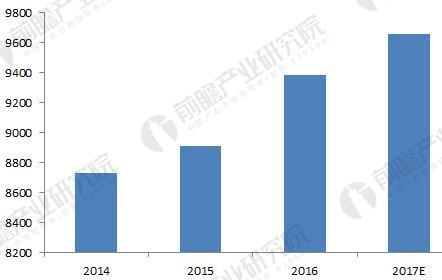
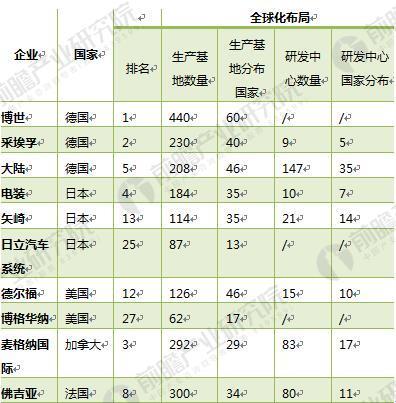
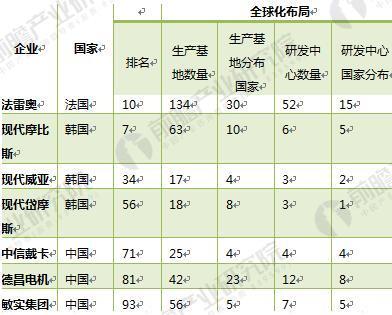
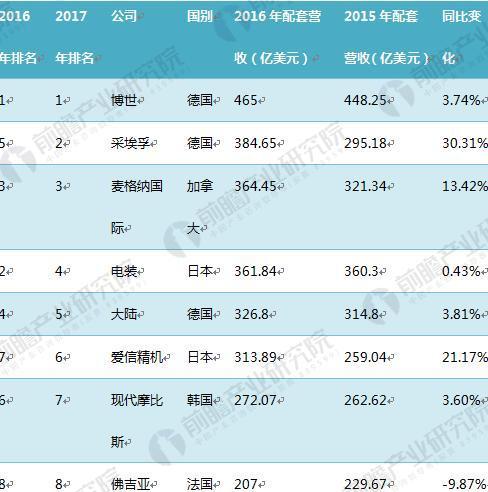
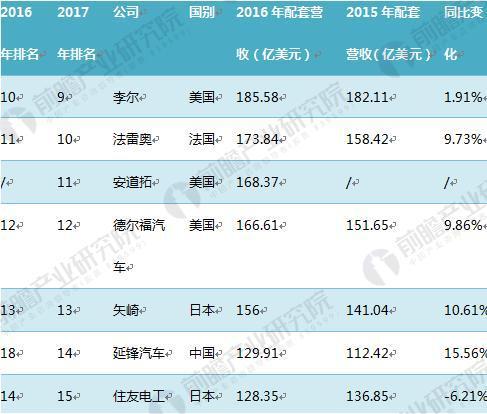
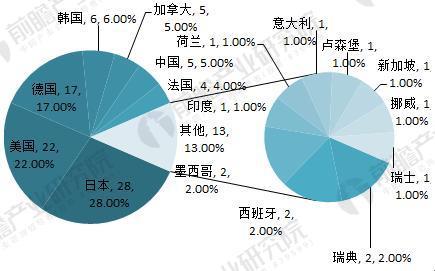
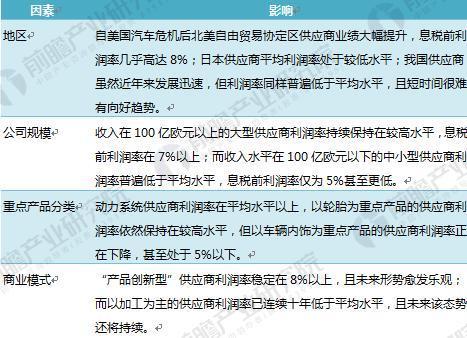
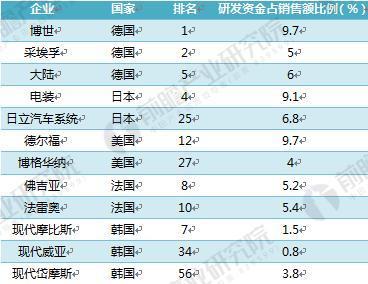
Global giants of the auto parts industry compete to accelerate the pace of global deployment